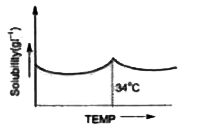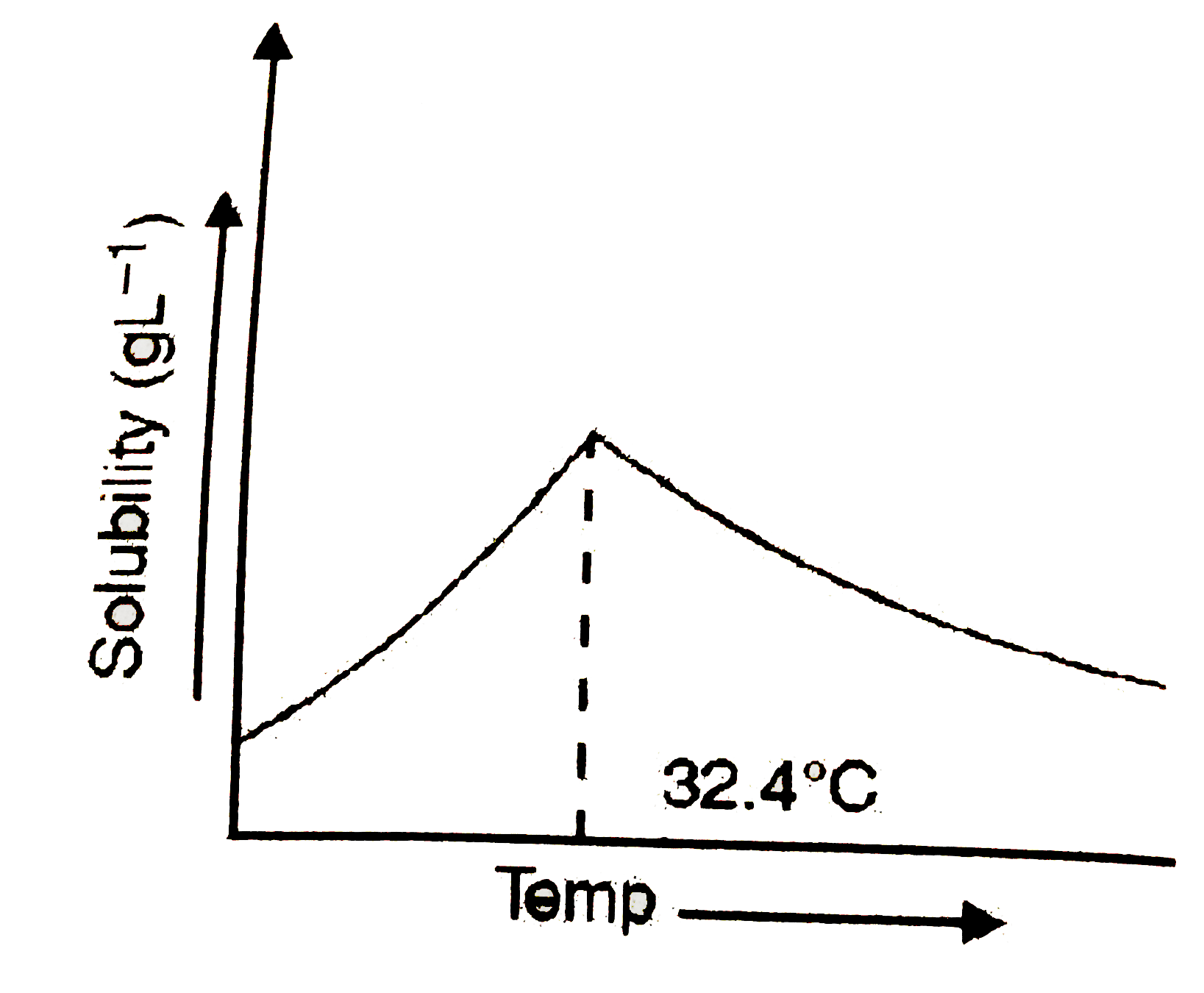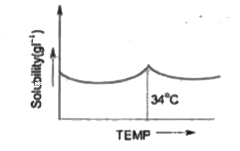Why the solubility of Glauber,s salt (Na2SO410H2O) first increases up to 32.4∘C and then decreases ?
To explain why the solubility of Glauber's salt (Na₂SO₄·10H₂O) first increases up to 32.4°C and then decreases, we can break down the explanation into several steps:
1. Understanding Glauber's Salt:
- Glauber's salt is sodium sulfate decahydrate, represented as Na₂SO₄·10H₂O. This means that each formula unit of sodium sulfate is associated with ten molecules of water.
2. Temperature and Solubility Relationship:
- The solubility of many salts typically increases with temperature due to increased kinetic energy, which allows more solute to dissolve in the solvent.
3. Critical Temperature (32.4°C):
- For Glauber's salt, the solubility increases as the temperature rises until it reaches 32.4°C. At this temperature, the solubility is at its maximum.
4. Phase Transition:
- At temperatures above 32.4°C, a phase transition occurs. The hydrated form of sodium sulfate (the decahydrate) begins to break down into two components:
- A liquid phase containing sulfate ions.
- An anhydrous solid phase (Na₂SO₄), which is the dehydrated form of sodium sulfate.
5. Decrease in Solubility:
- After reaching 32.4°C, the solubility of Glauber's salt decreases. This is because the solubility now depends primarily on the anhydrous solid phase. The presence of the anhydrous form limits the amount of sodium sulfate that can remain dissolved in the solution.
6. Conclusion:
- Therefore, the solubility of Glauber's salt increases with temperature until 32.4°C due to the dissolution of the hydrated form, but decreases thereafter due to the formation of the anhydrous solid phase, which restricts further dissolution.
- Glauber's salt is sodium sulfate decahydrate, represented as Na₂SO₄·10H₂O. This means that each formula unit of sodium sulfate is associated with ten molecules of water.
- The solubility of many salts typically increases with temperature due to increased kinetic energy, which allows more solute to dissolve in the solvent.
- For Glauber's salt, the solubility increases as the temperature rises until it reaches 32.4°C. At this temperature, the solubility is at its maximum.
- At temperatures above 32.4°C, a phase transition occurs. The hydrated form of sodium sulfate (the decahydrate) begins to break down into two components:
- A liquid phase containing sulfate ions.
- An anhydrous solid phase (Na₂SO₄), which is the dehydrated form of sodium sulfate.
- After reaching 32.4°C, the solubility of Glauber's salt decreases. This is because the solubility now depends primarily on the anhydrous solid phase. The presence of the anhydrous form limits the amount of sodium sulfate that can remain dissolved in the solution.
- Therefore, the solubility of Glauber's salt increases with temperature until 32.4°C due to the dissolution of the hydrated form, but decreases thereafter due to the formation of the anhydrous solid phase, which restricts further dissolution.
Topper's Solved these Questions
- LIQUID SOLUTION BOOK - FIITJEECHAPTER - LIQUID SOLUTION EXERCISE - ASSIGNMENT PROBLEMS (SUBJECTIVE) level-I (FILL IN THE BLANKS)
9 Videos
- LIQUID SOLUTION BOOK - FIITJEECHAPTER - LIQUID SOLUTION EXERCISE - ASSIGNMENT PROBLEMS (SUBJECTIVE) level-I (NUMERICAL BASED PROBLEMS)
8 Videos
- LIQUID SOLUTION BOOK - FIITJEECHAPTER - LIQUID SOLUTION EXERCISE - SINGLE INTERGER ANSWER TYPE QUESTIONS
2 Videos
- IONIC EQUILIBRIUM BOOK - FIITJEECHAPTER - IONIC EQUILIBRIUM EXERCISE - SINGLE INTEGER ANSWER QUESTIONS
4 Videos
- NUCLEIC ACID AND VITAMIN BOOK - FIITJEECHAPTER - NUCLEIC ACID AND VITAMIN EXERCISE - ASSIGNMENT PROBLEMS (OBJECTIVE)
15 Videos
Similar Questions
Knowledge Check
Na2b4O710H2O is
ABoraxBKerniteCGlauber saltDColemaniteMatch the entries of column I with appropriate entries of column II and choose the correct option out of the four options given.
Column I (Substance)Column II (Solubility)(A) Li2CO3(p) Increases continuously with increase of temperature(B) KCl(q) Decreases continuously with increase of temperature(C) Na2SO4.10H2O(r) First increases and then decreases(D) NH4NO3(s) Increases but not continuouslyAA-s, B-r, C-p, D-qBA-r, B-s, C-q, D-pCA-p, B-q, C-r, D-sDA-q, B-p, C-r, D-sSolubility curve of Na2SO4.10H2O in water with temperature is given as
 AΔH is -ve after 34∘CBsolution process is exothermic till 34∘C and endothermic after 34∘CCsolution process is endothermic till 34∘C and exothermic thereafterDΔH is-ve after 34∘C
AΔH is -ve after 34∘CBsolution process is exothermic till 34∘C and endothermic after 34∘CCsolution process is endothermic till 34∘C and exothermic thereafterDΔH is-ve after 34∘C
Find the wt of water present in 1.61 g of Na2SO4.10H2O
View Solution8.0575×10−2kg of Glauber's slat is dissolved in water to obtain 1dm3 of a solution of density 1077.2kgm−3. Calculate the molarity, molality and mole fraction of Na2SO4 in solution.
View SolutionSolubility curve of Na2SO4.10H2O in water with temperature is given as

View SolutionSolubility curve of Na2SO4.10H2O in water with temperature is given as

View SolutionAmount of oxygen in 32.2g of Na2SO4.10H2O is:
View Solution
